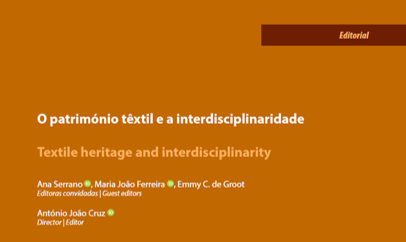Textile heritage and interdisciplinarity
DOI:
https://doi.org/10.14568/cp31fm2Abstract
In the last few years, textiles have been increasingly valued as products of specific periods and societies, reflecting the historical, social, artistic, economic and political contexts in which they were manufactured. Exceedingly resourceful, textiles have been essential for human life since time immemorial, being used and adapted in diverse applications and contexts.
Online: 2019-4-30
Publication: 2019-4-30
Downloads
References
[1] Siegelaub, S., Bibliographica textilia historiae: towards a general bibliography on the history of textiles based on the Library and Archives of the Center for Social Research on Old Textiles [CSROT], International General, Amsterdam (1997).
Braudel, F., Civilization and Capitalism 15th-18th Century. The Wheels of Commerce, vol. 2, University of California Press, Berkeley – Los Angeles (1982).
[3] Tímar-Balázsy, Á., Eastop, D. Chemical Principles of Textile Conservation, Butterworth-Heinemann, Oxford (1998).
[4] Janaway, R., Wyeth, P., Scientific Analysis of Ancient and Historic Textiles: Informing Preservation, Display and Interpretation: Postprints of the AHRC Research Centre for Textile Conservation and Textile Studies First Annual Conference 13-15 July 2004, Archetype Publications, London (2005).
[5] Appelbaum, B., Conservation Treatment Methodology, Butterworth-Heinemann, Oxford (2007).

Downloads
Published
How to Cite
Issue
Section
License
This work is distributed under a Creative Commons Attribution License (CC BY-NC-ND 4.0) which permits use, distribution, and reproduction in any medium following no commercial or derivatives, provided the original author and source are credited.
Copyright remains with the authors.






